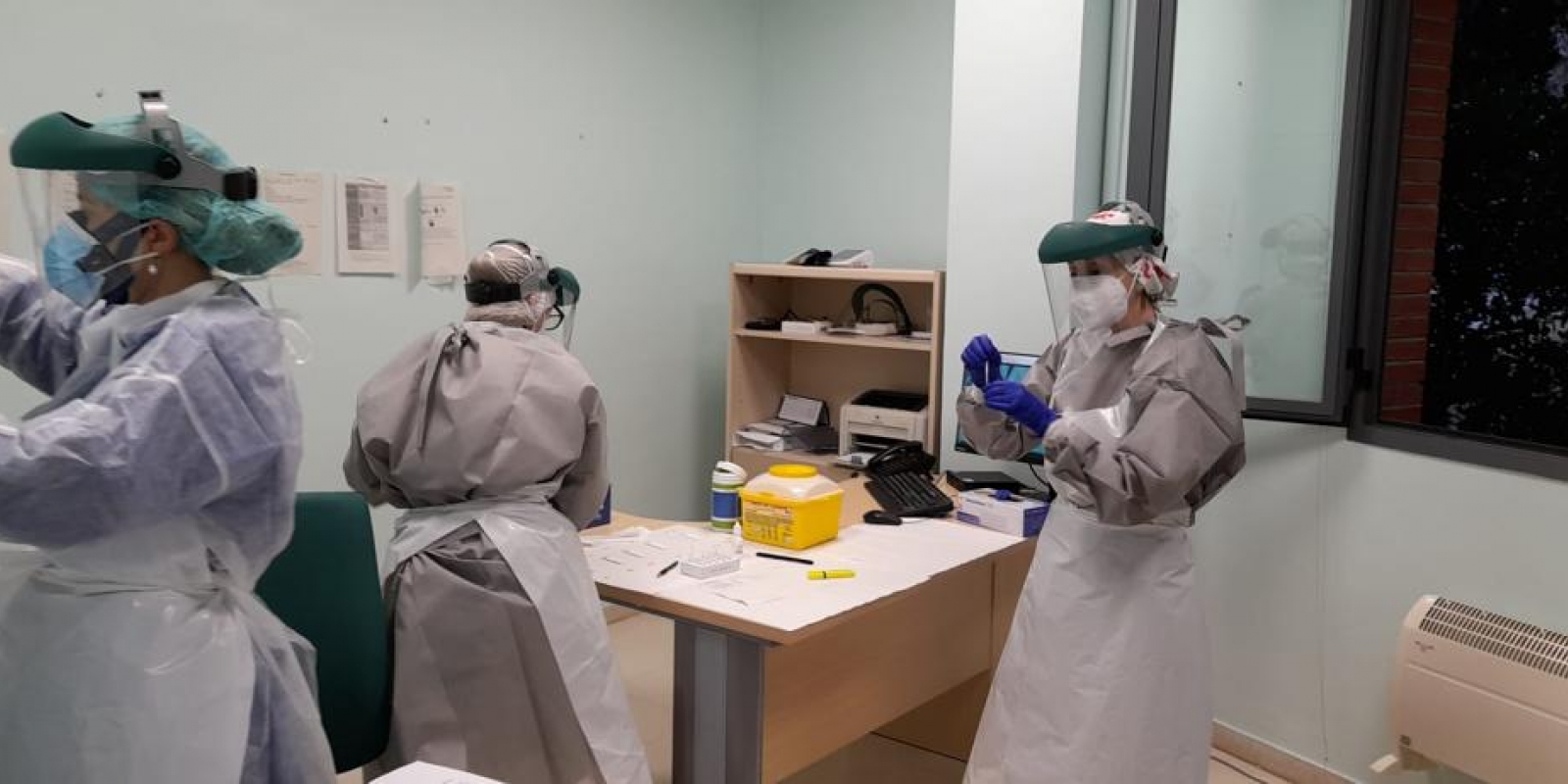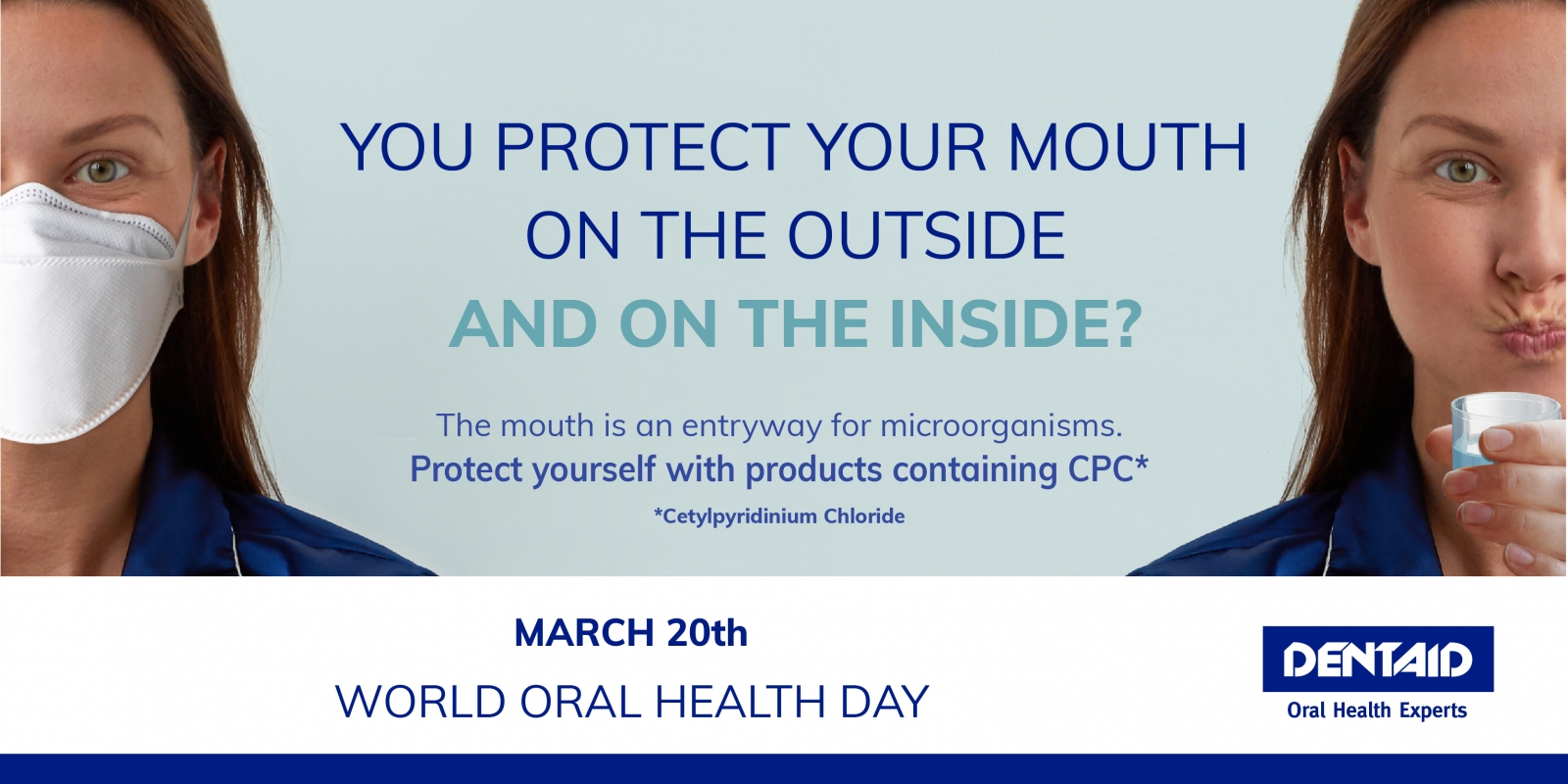DENTAID EXPERTISE
News for dentistry professionals
KEYS TO DIAGNOSE, PREVENT AND COMBAT DENTAL HYPERSENSITIVITY

Dental hypersensitivity is an oral condition that may significantly affect the quality of life of those who suffer from it. Here are the keys to establishing a proper diagnosis in the clinic and to helping patients prevent and treat it properly.
Dentinal hypersensitivity (DH) or dental hypersensitivity is defined as a fleeting, acute pain caused by the exposure of the dentin to thermal, tactile, osmotic, chemical or evaporative stimuli, and that cannot be ascribed to any other defect or disease(1).
DH may have serious repercussions on oral health and the quality of life of those who suffer from it. It can, at times, be very bothersome, during meals and when drinking, and sufferers will therefore limit their intake of some of their favourite foods and drinks, which may affect their mood. It can also be very troublesome when brushing or even when breathing. Patients will thus be less willing to carry out effective brushing in order to avoid the pain, which, in turn, favours the build up of dental plaque, thereby increasing the risk of cervical caries, gingivitis and periodontitis.
DH may affect up to one in every four persons in the general population. It occurs mainly in young women between the ages of 18 and 30, and the teeth most affected tend to be the canines and premolars(2).
Of patients at the dental clinic, those most affected by DH are periodontal patients (60-98% of these). After scaling and root planing, DH may affect 55% of patients and up to 88.2% of those treated with periodontal surgery. It can also be a motive for the discontinuation of periodontal maintenance in 12% of cases.
AETIOLOGY & CAUSES
The aetiology of DH is due, on the one hand, to the exposure of dentin to the oral environment from loss of enamel in the crown and loss of cementum together with gum recession at the root.
When these conditions occur, the dentinal tubules become exposed or remain open between the oral environment and the pulp. Therefore, the movement of the tubular fluid contained in the tubules produces stimulation of the A-delta fibres surrounding the odontoblasts, thereby transmitting a nerve impulse to the dental pulp and provoking a painful response(3). Thus, a thermal, chemical or tactile stimulus, which under normal conditions would not cause pain, produces very intense feeling of pain that is limited to the duration of the stimulus.
The main cause of hard dental tissue loss is abrasion, especially at the level of the neck of the teeth and in combination with erosion, attrition (either physiological or pathological), abfraction of the tooth necks caused by occlusal trauma and erosion caused by either intrinsic or extrinsic acidic substances.
Gum loss or recession may be associated with a variety of causes such as abrasion from aggressive and improper brushing, a thin gingival biotype, certain periodontal procedures, and even traction of buccal frenula in areas with little keratinised mucosa.
PREVENTIVE MEASURES
Before beginning treatment, a series of preventive measures must be established to prevent the occurrence and chronicity of the process. This requires changing habits and avoiding predisposing factors. The causes that lead to the opening and exposure of the dentinal tubules to the oral environment should be avoided, to therefore improve the effectiveness of outpatient treatment.
This will be based on nutritional advice, along with instructions on oral hygiene and correction of bad habits. As far as diet goes, intake of acidic foods and beverages should be eliminated or reduced, including those that do not seem acidic and are commonly consumed like yogurt, red and white wine, soft drinks, etc. Also, acid in the mouth should be counteracted in those who often experience vomiting, by drinking plenty of water, and using oral irrigators or sprays at the back of the mouth in lieu of brushing.
Regarding daily oral hygiene, appropriate brushes should be used with soft, cone contoured PBT filaments, coupled with a low-abrasion toothpaste. Brushing should be done with techniques similar to those used for periodontal treatment, in which the filaments are placed at the sulcus to remove plaque from the gingival margin, as in the Bass technique. Waiting at least 10 minutes after eating or drinking acidic substances before brushing is also recommended. This way, the saliva can cushion the drop in pH that occurs while favouring mineral precipitation on the surface of the tooth. This will help to prevent the wear of enamel and dentin from brushing and to prevent abrasion of the tooth necks.
Finally, as to correcting bad habits, it is advisable to avoid toothpicks, biting nails or other objects such as pens, oral piercings and, if bruxism is present, to correct this habit with bite splints.
TREATMENT
As for the treatment of DH, always start with the least invasive treatments, and only introduce further techniques and procedures if these do not resolve the condition.
As a part of outpatient treatment, desensitising toothpastes, mouthwashes and gels with two potential actions may be used. Firstly, potassium salts—a more classical treatment—are used to exert a chemical action on open dentinal tubules. Potassium is able to raise the threshold of excitation of the nerve fibres via the sodium-potassium pump and, in this way, decreases the transmission of the nerve impulse. This treatment is very effective but requires some time to achieve results.
Secondly, products involving a physical action to seal the dentinal tubules can be used. There are differing technologies, but one of the most innovative includes hydroxyapatite nanoparticles. With a composition similar to that of the natural tooth, they can deposit around the hypermineralised peritubular dentin to occlude the opening of the tubules partially or totally, diminishing the movement of the intratubular fluid and, in turn, preventing the onset of pain. The advantage is the immediacy of the effect and its resistance to rinsing and to acids, since the bond with the tooth is highly resilient.
When DH does not subside with outpatient treatment, other types of clinical treatments may be used to reduce or eliminate pain by covering the exposed dentin, either with resins and/or composites that occlude the opening of the tubules and help recover the morphology of the tooth, with mucogingival surgery to cover the exposed root, or in many cases by combining both techniques.
Only in cases of extreme pain, and when this restricts the daily life of the patient, will endodontics be used, or as a last resort, the extraction of the tooth.
DIAGNOSIS
The diagnosis of DH is to be carried out following these steps:
1. First, a detailed medical history is to be made by noting down all relevant diseases and disorders, such as situations involving increased incidence of vomiting. In addition, special attention should be paid to the medication taken by the patient and to the lifestyle and dietary habits, i.e. consumption of acidic foods and beverages that may have repercussions on their condition.
2. Second, a dental history is to be taken, asking about the type of pain: what it is like, when it appears, what causes it and how long it lasts. It should also include the way daily oral hygiene is performed, and how often.
3. A clinical examination is then to be performed to rule out other diseases that have DH as a symptom, such as caries, gingivitis or pulpitis. Observation should be made for lesions such as abrasion, erosion or gingival recession involving the affected teeth. To corroborate which teeth and precise areas are affected, the stimuli causing sensitivity are to be reproduced with cold water, air, tactile stimulation with a probe, etc. The differential diagnosis of DH can thus be established and, if the diagnosis is confirmed, it can then be clinically managed.
About the Author
Periodontist and Medical Advisor at DENTAID
Bibliography
- Canadian Advisory Board on Dentine Hypersensitivity (2003) Consensus-based recommenda-tions for the diagnosis and management of dentine hypersensitivity. J Can Dent Assoc 2003; 69: 221-228.
- Splieth CH, Tachou A. Epidemiology of dentin hypersensitivity. Clin Oral Investig 2013; 17 Suppl. 1: S3-S8.
- Brännström M. A hydrodynamic mechanism in the transmission of pain producing stimuli through the dentine. In: Anderson DJ, editor. Sensory mechanisms in dentine. Oxford: Pergamon Press; 1963; p. 73-79.
RELATED ARTICLES

14 Dec 2021
A recent study shows the efficacy of mouthwashes containing CPC in patients with COVID-19
Investigators from the Aragonese Health Service and the Health Research Institute of Aragon conducted a clinical trial in Primary Care with the aim of…

18 Nov 2021
Laboratory studies prove that CPC in mouthwashes is effective against different variants of SARS-CoV-2 thanks to its mechanism of action
INTRODUCTION The oral cavity is a route of entry, infection and transmission of microorganisms, including the SARS-CoV-2 coronavirus. Several…

16 Mar 2021
World Oral Health Day: What role does the oral cavity play during SARS-CoV-2 infection?
At DENTAID, we want to highlight the important role that oral health plays. Coinciding with World Oral Health Day, we have launched an awareness…
Sign up for the DENTAID Expertise newsletter
Sign up for the newsletter